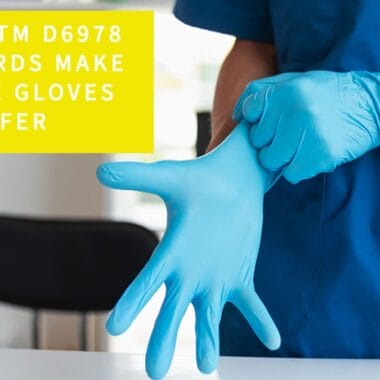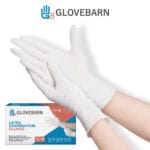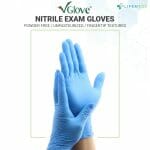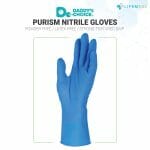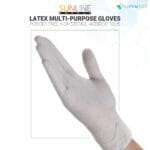Hand protection is paramount, especially in industries dealing with chemicals, pathogens, or food. The three popular materials for disposable gloves include nitrile, latex, and vinyl. Each has its own set of advantages and applications. However, achieving a perfect fit is critical regardless of the material.
The Importance of Finding the Perfect Glove Fit
Safety in many industries hinges on personal protective equipment (PPE), with nitrile, latex, and vinyl gloves being a cornerstone. Whether prepping food, handling chemicals, or engaging in medical procedures, finding the right glove fit ensures agility, comfort, and protection.
Material Properties
Nitrile gloves, made of synthetic rubber, are known for their durability and resistance to chemicals and punctures. Nitrile fits more snugly than vinyl and can stretch similarly to latex, providing a skin-tight fit. Latex gloves, made from natural rubber latex, offer excellent flexibility. Their unparalleled elasticity conforms closely to the hand, making them the perfect glove for industries requiring tactile sensitivity. Vinyl gloves are made from polyvinyl chloride (PVC), a cost-effective alternative to nitrile and latex, suitable for industries requiring frequent glove changes and short-term tasks. Vinyl is less elastic and offers a looser fit, making it essential to find the right size.
Glove Sizing
Sizing can vary slightly between manufacturers, but gloves typically come in extra-small, small, medium, large, and extra-large. Always refer to the sizing chart provided by the manufacturer. To measure hand width, spread your hand flat and measure across the knuckles with a soft measuring tape. For length, measure from the bottom of the palm to the tip of the middle finger. Always consult the manufacturer’s sizing chart, as sizes can vary among glove brands.
Finding Task-Specific Gloves for Your Industry
The specific task you use the gloves for can help dictate the desired fit. Jobs requiring fine motor skills might necessitate a tighter fit, whereas a slightly looser fit might suffice for short, general tasks. Precision tasks demand a glove that fits like a second skin. Before buying gloves, evaluate the type of fit you need for the nature of the job. For tasks where gloves are worn for extended periods, comfort becomes crucial. A glove that’s too tight might restrict circulation, while one that’s too loose could cause chafing.
Techniques to Ensure a Perfect Fit
How you put on a glove before a task can impact its fit. Prepare your hands by ensuring they are clean and dry. If your hands are wet or moist, it can make putting gloves on difficult. Make sure to remove any jewelry that might puncture or stretch the gloves. Air out the gloves by shaking them to ensure fingers aren’t stuck together. Roll the cuff down, insert your fingers, and then roll the cuff up your wrist.
Latex Allergy Considerations
Latex gloves might cause allergic reactions for some with latex allergies or sensitivities. Such users should opt for nitrile or vinyl gloves. The fit, in this case, should be such that it prevents any allergic residues from coming in contact with the skin.
Glove Thickness
Nitrile and latex gloves come in various thicknesses, impacting the flexibility and overall fit. Thicker gloves might offer better protection but can compromise movement and agility. Vinyl is typically available in a standard thickness, which might be less flexible than latex or nitrile.
Frequent Glove-Changes
In environments where gloves must be frequently changed, ease of putting on and taking off sometimes becomes critical. A slightly looser fit (but not too loose) might be preferred in such cases. Temperature and humidity can impact glove material. For instance, in colder environments, a latex glove might feel stiffer, while in hot and humid conditions, sweating can make it challenging to wear or remove gloves. This could also require more frequent glove changes depending on your industry.
Choosing the Best Glove for Your Industry: Nitrile, Latex, or Vinyl
Finding a perfect fit with nitrile, latex, or vinyl gloves isn’t just about comfort. It’s about safety, dexterity, and ensuring the best performance for your task and industry. By understanding the unique characteristics of each glove material and considering the factors listed above, you can select the best type of gloves that offers both protection and functionality for your industry.
Protective gloves play a critical role in ensuring safety across various industries. With options like nitrile, latex, and vinyl available, understanding the advantages and potential limitations is vital for making an informed decision. For the healthcare and dental industry, nitrile gloves are the most optimal choice for their puncture-resistant and allergen-free properties. Latex gloves are a common alternative due to their excellent tactile sensitivity, as long as no latex allergies are present.
Given their cost-effectiveness and the constant need for frequent glove changes, vinyl gloves are the most popular in the food service industry. Nitrile are a popular alternative for tasks requiring better chemical resistance and hand protection. For industrial and manufacturing, nitrile’s durability is essential when handling machinery and chemicals. Latex gloves can be a good alternative for nitrile when dexterity is required due to their flexibility.
For lab work, nitrile offers superior resistance to chemicals, standing out as the best glove option in laboratory settings. Both nitrile and latex provide reliable protection against most cleaning products in cleaning services and maintenance. Nitrile is the better choice for protection against more potent chemicals and solutions. In cosmetology and hair salons, nitrile is an industry favorite for its optimal protection against the chemicals in dyes and treatments. Lastly, for tattoo artists and parlors, black nitrile gloves are the standard for masking ink stains and providing protection between the client and the artist.
Purchasing Nitrile, Latex, and Vinyl Gloves
In the ever-evolving landscape of industries, the need for appropriate personal protective equipment (PPE) remains constant. Choosing the right glove ensures the safety and efficiency of tasks and prioritizes the workforce’s well-being. As you navigate the myriad of glove options, remember that the ideal choice seamlessly integrates with the demands of your specific industry and offers a snug, comfortable fit. By dedicating time and research to this decision, you champion a proactive approach to safety and quality, fostering a workplace environment that is both secure and productive.
References:
National Library of Medicine, 2022. Does the fit of personal protective equipment affect functional performance? A systematic review across occupational domains.











